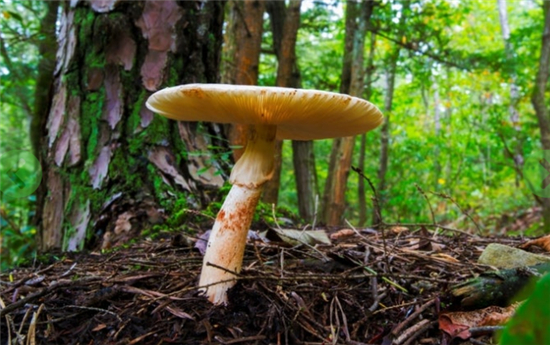
If you plan on taking Fido for a stroll in the crisp winter air any time soon, local park officials want you to stay vigilant. The Western destroying angel and death cap mushrooms found throughout the Bay Area may look like something you'd pick up in the produce section, but they can cause organ failure without immediate treatment.
The Amanita ocreata and Amanita phalloides mushrooms start popping up after the first rains of the season, according to the East Bay Regional Park District. They contain amatoxins, which account for 95 percent of mushroom deaths worldwide and are associated with liver failure, according to a National Center for Biotechnology Information article.
Symptoms begin about 12 hours after ingestion, with gastroinestinal distress. The kidneys and liver are usually the first organs to be affected by poisoning, according to the district.
Both people and pets are vulnerable to amatoxins. Collecting mushrooms in East Bay Regional Park District system is banned.
The death cap and Western destroying angel are usually found near oak tree roots.
The death cap is medium- or large-sized mushroom that usually has a green-gray cap, white gills on the underside of the cap and a white sack around the base of the stem, according to the district. It is not native to the Golden State.
The Western destroying angel is a native mushroom that tends to fruit from late winter to spring. It's a medium- or large-sized mushroom that usually has a white cap, white gills on the underside of the cap and a white sack at the base, according to the district.
The lethal Galerina and Lepiota mushrooms can also be found in the Bay Area.
Anyone who believes their pet has ingested deadly mushrooms should immediately contact a veterinarian.
You can learn more about local fungi at the East Bay Regional Parks annual Tilden Fungus Fair, on Jan. 25 and Jan. 26 at Tilden Nature Area's Environmental Education Center. See more information about the event here.
























